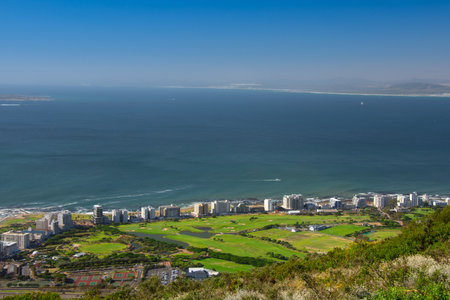Introduction to the Isle of Anglesey Coastal Path
Nestled off the north-west coast of Wales, the Isle of Anglesey Coastal Path is a remarkable long-distance walking route that encircles one of the country’s most captivating islands. Stretching for approximately 140 miles (225 kilometres), this path weaves its way through a diverse tapestry of landscapes, from rugged sea cliffs and sweeping sandy beaches to tranquil woodland and salt marshes teeming with wildlife. The path’s unique appeal lies not only in its breathtaking scenery but also in its deep connection to Welsh heritage and culture. Revered by ramblers and nature enthusiasts alike, it has become an integral part of Wales’ rich walking tradition, offering both locals and visitors an unparalleled opportunity to experience the island’s dramatic coastline and vibrant communities at a gentle, contemplative pace.
Route Highlights and Key Stretches
The Isle of Anglesey Coastal Path offers an extraordinary variety of landscapes, with each section showcasing its own unique character. Walkers are treated to a blend of dramatic sea cliffs, expansive sandy bays, picturesque villages, and some of Wales’ most iconic landmarks. The path is thoughtfully waymarked, making it easy for ramblers of all abilities to navigate and enjoy the journey.
Dramatic Sea Cliffs
One of the most exhilarating stretches is the rugged coastline between Holyhead and Trearddur Bay. Here, walkers traverse high cliffs that drop dramatically into the Irish Sea, with panoramic views and abundant seabird colonies adding to the spectacle. South Stack Lighthouse is a notable highlight, perched on its rocky islet and accessible via steep steps – a must-see for birdwatchers and photographers alike.
Sandy Bays and Tranquil Beaches
The path also winds past some of Anglesey’s finest beaches. Newborough Warren and Llanddwyn Island offer miles of golden sand backed by dunes and pine forest, while Red Wharf Bay provides vast tidal sands ideal for a peaceful stroll. These areas are perfect for picnics, paddling, or simply soaking up the coastal atmosphere.
Charming Villages
Along the route, several traditional Welsh villages provide welcome opportunities for refreshment and local hospitality. Moelfre is known for its maritime history and friendly cafés; Beaumaris boasts a historic castle alongside independent shops; and Cemaes Bay charms visitors with its colourful harbour.
Famous Landmarks Along the Path
| Landmark | Description |
|---|---|
| South Stack Lighthouse | Iconic lighthouse set on an island reached by footbridge; stunning views and wildlife spotting |
| Beaumaris Castle | UNESCO World Heritage Site; impressive moated fortress dating back to Edward I |
| Llanddwyn Island | Romantic tidal island associated with Wales’ patron saint of lovers, St Dwynwen |
| Puffin Island | Visible from Penmon Point; renowned for its seabird colonies including puffins in season |
A Journey Through Nature and Heritage
With such diverse scenery packed into its 130-mile length, the Isle of Anglesey Coastal Path stands out as one of Britain’s most rewarding long-distance trails. Whether you’re drawn by wild headlands or sleepy fishing villages, every stretch offers a fresh perspective on this remarkable corner of Wales.

3. Wildlife and Natural Beauty
One of the undeniable joys of walking the Isle of Anglesey Coastal Path is the remarkable array of wildlife and natural wonders that greet you at every turn. This 140-mile route is a living tapestry, where lush saltmarshes, dramatic sea cliffs, sandy coves, and wildflower meadows create an ever-changing backdrop for your journey. As you wander along, keep an eye out for playful Atlantic grey seals basking on the rocks, or perhaps catch a glimpse of dolphins dancing in the surf. Birdwatchers will be in their element, with choughs, oystercatchers, and even the occasional peregrine falcon swooping overhead. The coastal heathland comes alive with colour in spring and summer, as bluebells, thrift, and rare orchids carpet the ground. Beyond the flora and fauna, the vistas themselves are nothing short of breathtaking—whether it’s the sweeping expanse of Red Wharf Bay at low tide or the rugged beauty of South Stack’s cliffs, crowned by its iconic lighthouse. Each step along this path offers a fresh perspective on Anglesey’s unique natural heritage, making every walk both a discovery and a delight.
4. Practical Tips for Walkers
Embarking on the Isle of Anglesey Coastal Path is a rewarding experience, but a bit of practical preparation goes a long way to ensure your adventure is both enjoyable and safe. Here’s some essential advice tailored for walkers keen to explore this Welsh gem.
Preparation and Planning
The path stretches approximately 140 miles (225 km), so it’s wise to plan your route in advance. Consider breaking the walk into manageable sections based on your fitness level and interests. Accommodation options range from cosy B&Bs to traditional inns and campsites; booking ahead during peak periods is advisable. Make sure to check tide times, as certain parts of the path can be affected by high water levels.
What to Pack
| Item | Why Its Essential |
|---|---|
| Sturdy Walking Boots | The terrain varies from sandy beaches to rugged cliff paths. |
| Waterproof Jacket & Trousers | Welsh weather is famously changeable—be ready for rain! |
| OS Map or GPS Device | Certain stretches are remote with limited signage. |
| Water Bottle & Snacks | Cafés and shops can be few and far between along the route. |
| First Aid Kit | Bumps and scrapes are possible on uneven ground. |
| Sun Protection | Even on cloudy days, UV exposure can be significant. |
| Mobile Phone (fully charged) | For emergencies or checking transport timetables. |
Navigating the Path
The Anglesey Coastal Path is generally well-marked with distinctive blue and yellow signs, but in rural or more isolated stretches, you’ll need to pay close attention. The Ordnance Survey Explorer Map OL262 covers the entire route and is highly recommended for reference. While mobile signal is usually reliable near villages and towns, don’t rely solely on digital navigation tools. Download offline maps if using an app like OS Maps or Komoot.
The Best Times of Year to Visit
Spring (April–June): Wildflowers bloom along the cliffs, seabirds nest, and the weather is mild.
Summer (July–August): Longer daylight hours and warmer temperatures, but expect more visitors.
Autumn (September–October): Quieter trails, beautiful autumnal colours, and migratory bird sightings.
Winter (November–March): Fewer crowds, but shorter days and potentially muddy or slippery paths; only recommended for experienced walkers prepared for challenging conditions.
A Local Note:
If you’re new to walking in Wales, remember that access rights mean some paths cross private farmland—always respect gates, livestock, and local customs. A friendly “Bore da!” (“Good morning!” in Welsh) goes a long way with locals you meet en route.
5. Connecting with Local Culture
Walking the Isle of Anglesey Coastal Path isn’t just about stunning seascapes and invigorating exercise—it’s also a unique opportunity to immerse yourself in the heart of Welsh culture. As you traverse this scenic route, you’ll encounter countless ways to engage with the island’s vibrant heritage and welcoming community. One of the most rewarding aspects is hearing and perhaps even practising the Welsh language; road signs, place names, and conversations in local cafés are often bilingual, offering walkers an authentic linguistic experience that highlights Anglesey’s proud identity.
Heritage sites pepper the path, ranging from ancient burial chambers like Bryn Celli Ddu to medieval churches and lighthouses such as South Stack. These landmarks invite walkers to pause, reflect, and appreciate the layers of history that have shaped the island. Many sites provide interpretive boards or guided tours—don’t hesitate to chat with local volunteers or custodians, who are usually more than happy to share stories and insights about their treasured landmarks.
Engaging with Anglesey’s unique community spirit is equally enriching. The path meanders through small villages where local shops, family-run tearooms, and seaside pubs offer a warm welcome and a taste of regional produce—be it bara brith, Welsh cakes, or freshly caught seafood. Take time to visit village fêtes or farmers’ markets if your walk coincides with these events; they’re brilliant opportunities to meet residents, hear local music, and support independent businesses.
For those keen on deeper cultural immersion, consider planning your walk around annual events like the Anglesey Show or Eisteddfodau (Welsh cultural festivals), where music, poetry, and crafts take centre stage. Even outside of organised festivities, simply striking up conversation with locals can lead to fascinating exchanges about life on Ynys Môn—the Welsh name for Anglesey.
Ultimately, walking the Isle of Anglesey Coastal Path offers much more than physical achievement; it’s a chance to be part of a living landscape where language, history, and community come together in everyday moments. Whether you’re learning a few phrases of Cymraeg (Welsh), marvelling at ancient monuments, or sharing stories over a pint at the village pub, each step connects you more deeply with the island’s enduring spirit.
6. Where to Rest and Refuel
After a rewarding day on the Isle of Anglesey Coastal Path, finding the right spot to unwind is essential. The island offers a warm Welsh welcome with its range of charming inns, friendly cafes, and cosy accommodation options dotted along the trail. Whether you prefer a rustic bed and breakfast or a traditional pub with rooms, there’s something for every type of walker.
Local Inns and Pubs
Anglesey is well-known for its characterful inns that have been serving travellers for centuries. The Black Lion Inn in Llanfaethlu is highly regarded for its hearty meals and comfortable rooms, while the Bull Hotel in Llangefni combines local hospitality with historic flair. Many walkers also enjoy the traditional atmosphere of the Pant-Y-Gwydr, where you can sample real ales and classic pub fare after a long day on your feet.
Cafes and Tearooms
No British walking adventure would be complete without a stop at a local café or tearoom. The Moelfre Seawatch Café is a favourite for its sea views and homemade cakes, while the Caffi Siop Mechell in Llanfechell offers excellent Welsh rarebit and locally baked treats—perfect for refuelling before heading back onto the path.
Accommodation Along the Path
If you’re planning a multi-day trek, consider booking into one of Anglesey’s many welcoming guesthouses or boutique hotels. The Trefadog Beach House provides direct access to sandy shores, while the Anglesey Outdoors centre near Holyhead caters specifically to walkers, offering both private rooms and bunkhouse options. For those who love camping, several well-kept sites are available close to the trail’s most scenic stretches.
Regional Specialities to Try
A visit to Anglesey isn’t complete without sampling some of its regional delicacies. Look out for dishes featuring Anglesey sea salt, award-winning Mona lamb, and fresh seafood such as Menai Strait mussels. The island’s farmers’ markets are ideal places to pick up local cheeses, chutneys, and traditional bara brith (Welsh fruit loaf) to enjoy as trail snacks or souvenirs.
Practical Tips
Many of these establishments welcome muddy boots and offer facilities for drying wet gear—a thoughtful touch appreciated by walkers caught in Wales’ famously changeable weather. It’s wise to book ahead during peak walking season, especially at popular inns along coastal hotspots like Beaumaris and Rhosneigr.
The combination of warm hospitality, hearty food, and diverse accommodation makes Anglesey’s coastal path not just a walker’s paradise but also a culinary adventure rooted in local tradition.
7. Conclusion: Why Anglesey is a Walker’s Paradise
Reflecting on the journey around the Isle of Anglesey Coastal Path, it becomes clear why this route is celebrated among walking enthusiasts and lovers of authentic Welsh landscapes. What truly sets Anglesey apart is the harmonious blend of unspoilt natural beauty, rich history, and genuine local culture that unfolds with every step. Here, walkers are treated not just to panoramic sea views and dramatic cliff paths, but also to encounters with ancient Celtic sites, vibrant wildlife, and welcoming villages steeped in tradition.
The path offers a rare sense of tranquillity—whether you’re strolling through windswept dunes, discovering secluded coves, or pausing at a traditional seaside pub for a well-earned cuppa. The changing scenery reflects Wales at its most elemental: wild heather moorlands, iconic lighthouses guiding ships home, and flocks of seabirds wheeling over salt-sprayed rocks. Every mile presents an opportunity to slow down, breathe deeply, and connect with the heart of Welsh heritage.
Anglesey’s commitment to maintaining and signposting the path ensures accessibility for both seasoned hikers and casual ramblers alike. The warm hospitality of locals—often ready with a friendly “Shwmae” or directions—adds to the island’s charm. Whether you seek solitude, adventure, or a family-friendly day out, Anglesey’s coastal path delivers an experience that is as memorable as it is meaningful.
For those in search of an authentic walking adventure in Wales, the Isle of Anglesey Coastal Path stands as a testament to the enduring appeal of Britain’s countryside. It invites each visitor to write their own story amid its timeless vistas—a true walker’s paradise that captures the soul of Wales.


